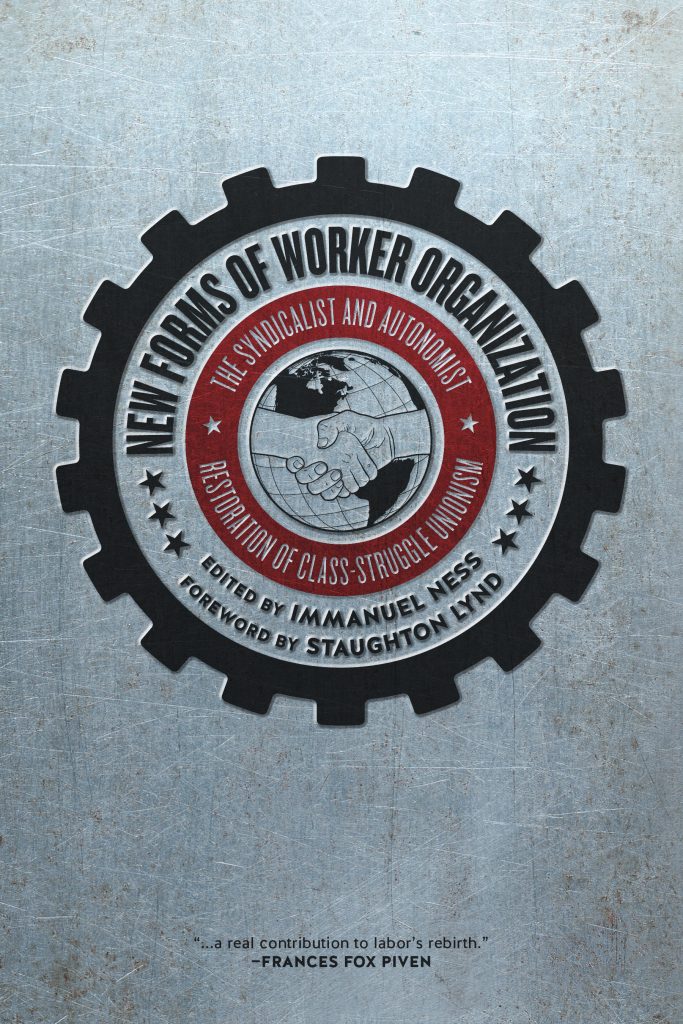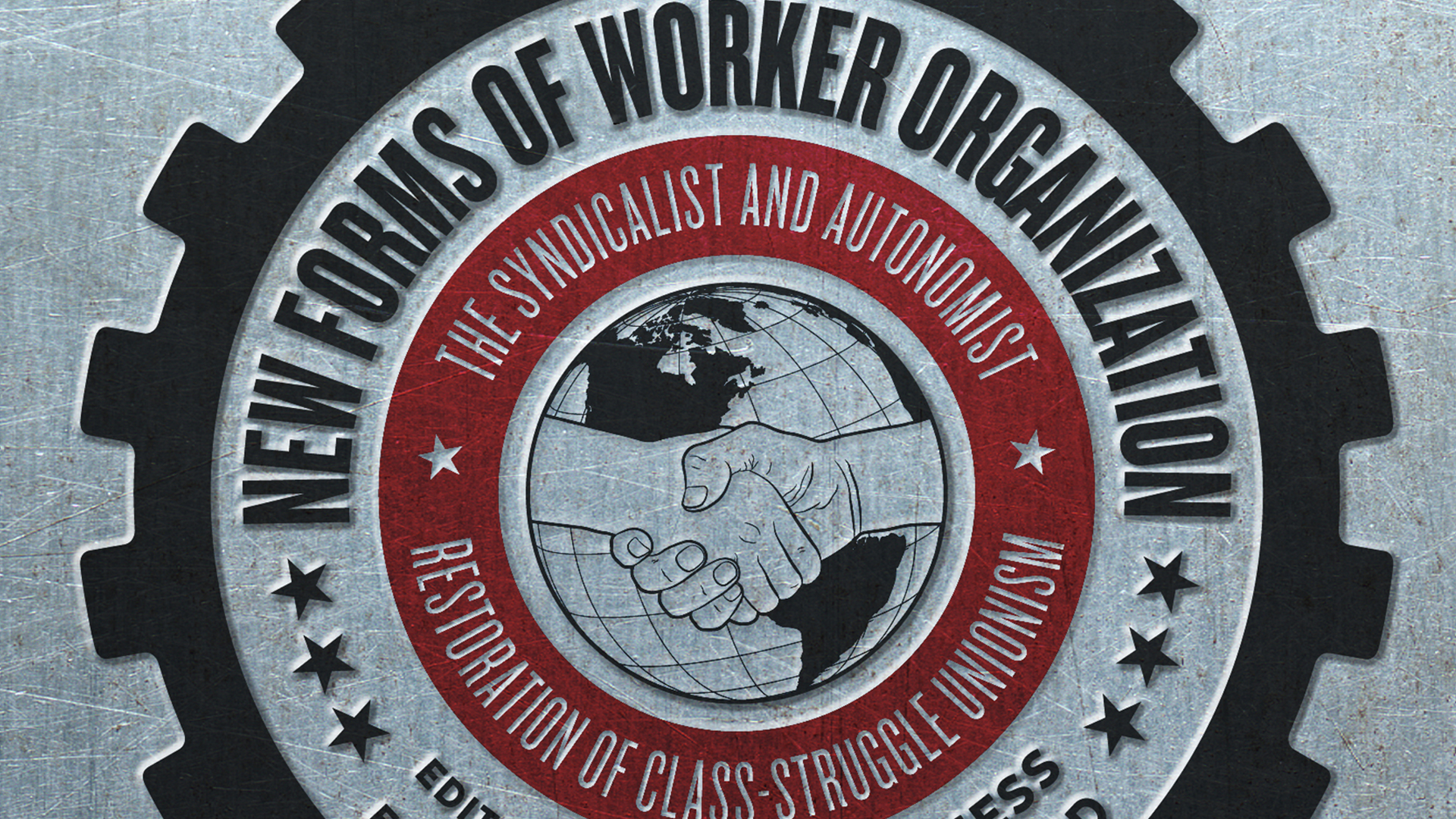
by Steve Thornton
Industrial Worker
September 2014
I was discussing the recent wave of fast-food worker strikes with two friends. We had all witnessed the walkouts and joined the picket lines sparked by the one-day actions. Each of us came away with different takes on the viability of this campaign. I said it reminded me of the Justice for Janitors movement in the 1980s: a lot of flash, powerful, courageous actions by the mostly immigrant workers—actions that weren’t exactly strikes—and a strategy focused on the big money that hired the cleaning companies.
One friend had been reading recent critiques of the fast food organizing efforts. He dismissed the “paid staff” and “bureaucratic, big, centralized unions” that have run the project. My other friend replied: “Paid staff? Centralized? You could be talking about Elizabeth Gurley Flynn and the early IQQ!” That’s about how far the conversation got.
In fact, Gurley Flynn was a paid organizer and the IWW did change its structure in the face of criticism over top-down control. It wasn’t until 1915 and the creation of the Agricultural Workers Organization (AWO) in Kansas City that the IWW really built its power among farm workers in the western part of the country. The AWO also fostered the system of “roving delegates” who could sign up workers on the spot and collect dues, another change from the old practice of centering everything in Chicago.
Like my friends and I, it seems that most who complain about the current Fight for Fifteen campaign are acting like (as we used to say) armchair revolutionaries. That’s why “New Forms of Worker Organization: The Syndicalist and Autonomist Restoration of Class Struggle Unionism” is such a valuable addition to the debate. Published this year by PM Press and edited by Immanuel Ness, “New Forms” provides a worldwide perspective on bottom-up organizing efforts from the past and present.
Ness argues that it won’t work to “reinvigorate” conventional unions or to reach “density” in particular industries. I was fortunate to hear him speech recently at “How Class Works,” a biennial conference held at Stony Brook University and sponsored by the school’s Center for Study of Working Class Life. At his workshop, Ness posed the question that is at the core of this book: Can we create solidarity unions within (or in spite of) current labor organizations?
“New Forms of Worker Organization” is a book of essays divided geographically between Europe and Asia, the Global South and the Global North. With contributions from 16 writers, Ness describes the struggle of autonomous workers’ organizations and their efforts to take hold. From worker-peasant coalitions in Madagascar to the IWW Jimmy John’s campaign in Minnesota, these writers provide detailed accounts of struggle by workers to build powerful, democratic and independent movements.
We learn, for example, from Steven Manicastri about the history of Italian operaismo, also known as autonomous Marxism, based on “the thinking and practice of politics” in the workplace. Independent operaist groups organized strikes and slow-downs in the 1960s, initially to force their official unions to act on workplace safety or wage issues. Such decentralized activity spilled into the community, where mass squatting, rent strikes, and refusal to pay the full price of utility bills because the practice of thoughts. Operaismo has since evolved into the creation of Confederazione die Comitati di Base (COBAS, or base committees)—independent worker groups that may include migrant workers, students, retirees and the unemployed. They have resisted education cuts, austerity and the power of banks. In a sense they are the “dual unions” that the American Left has alternately loved and hated. Described as the “Zen Buddhist of politics,” COBAS have been operating without official leaders or formal rules of discipline for over 20 years.
How did Exxon and Witness for Peace (WFP) facilitate revolutionary unionism in Columbia? Now there’s a story, and Aviva Chomsky explains it all in this book. In brief, Exxon built a giant coal mine in the 1980s that displaced indigenous communities, mostly small farmers and livestock herders. The National Union of Workers in the Coal Industry (Sintracarbon) learned about the mine’s poisoning of water and land from a WFP fact-finding delegation. The union asked WFP to bring all the parties together and the result was a negotiating demand by the mine workers that would require the coal company (now an international consortium) to recognize, negotiate with, and compensate the affected communities. In 2006 Chomsky and others formed an international solidarity group to support that process. She let the parties speak for themselves in a series of reprinted letters from Sintracarbon. It is clear that the union’s commitment to the indigenous people gee deeper as the negotiations progressed. In the end, in the face of a possible strike, the union won a small victory by forcing the boss to discuss the community issue and agreeing to participate in “social programs” offered by the company. Today Sintracarbon continues to fight alongside the community, most recently against the diversion of a major river.
A book on horizontal organizing would not be complete without Staughton Lynd. In his brief introduction, Lynd tells us of a dream he had 50 years ago. In this dream he and his wife Alice are helping neighbors are put out a forest fire. He describes the frantic work to douse the blaze, “incessant activity” as he calls it. “Then something else had taken over.” Lynd writes. “Slowly it came to me. It had begun to rain.” What is more effective than the toil of small efforts? A storm that brings a new world from the ashes of the old.






